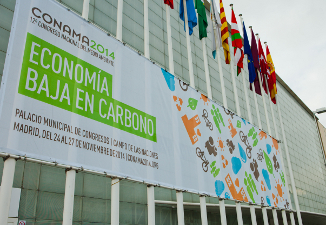Patrocinadores



























Colaboradores
Coorganizadores



























What are the driving forces of carbon intensity changes in east Asia Pacific emerging countries?
|
Autor:
Miguel Rodríguez Universidad de Vigo |
|
| Otros autores: Yolanda Pena-Boquete (Universidad de Vigo) | |
|
Tipo:
Comunicación técnica escrita |
|
| Temática: Economía; Energía | |
|
|
|
| Documentos asociados: Doc. Escrito | |
|
|
|
|
Resumen: |
|
|
The Copenhagen Accord (UNFCCC 2009) probably delivered the first international commitment from some development countries in order to take action against climate change. They agree on intensity targets (instead of absolute targets) in order to fight against climate change (i.e. China and India 2009 Copenhagen voluntary agreements on carbon intensity). Nevertheless, carbon intensity measures might be weakly linked to energy or carbon efficiency thus providing misleading guidelines for policy makers. However, many times in the literature intensity and efficiency variables are understood as measuring the same concept. Some authors have advocated in favor of the adoption of emission intensity target by developing countries (usually an upper limit on CO2 per GDP). In any case, emissions intensity targets may be compatible with high emission growth levels. Accordingly, some authors have raised some doubts about some national intensity target announcements as long as it could represent just committing to business as usual (China for instance). From a different perspective, emissions relative to GDP may be a good proxy for valuing the national emission reduction potentials. Thus, the greater emissions intensity the higher room remains for improvement. In this context, differences on intensity values (and therefore differentiated intensity target commitments) may be displaying dissimilarities in emission reduction potentials. Accordingly, the European Commission considers setting national targets in the EU on a carbon and energy intensity basis for 2035. The main objective of this piece of research is to identify the factors driving carbon intensity changes in South Asian emerging countries. Hence, we explain carbon intensity values based on the energy and economic performance of countries. The novelty in this piece of research is to deviate from common practice in the empirical literature by including labour productivity and employment rates instead of per capita GDP in order to shed more light on the mechanism behind the GDP effect on carbon intensity. According to our results, the huge improvement in China carbon intensity since the nineties is mainly due to labour productivity developments and not so much to energy efficiency improvements. The results may be useful for policy analysis in other regions like EU (for setting new national targets on a carbon and energy intensity basis for 2035) and for Latin American countries (for any participation in climate action). |
|









